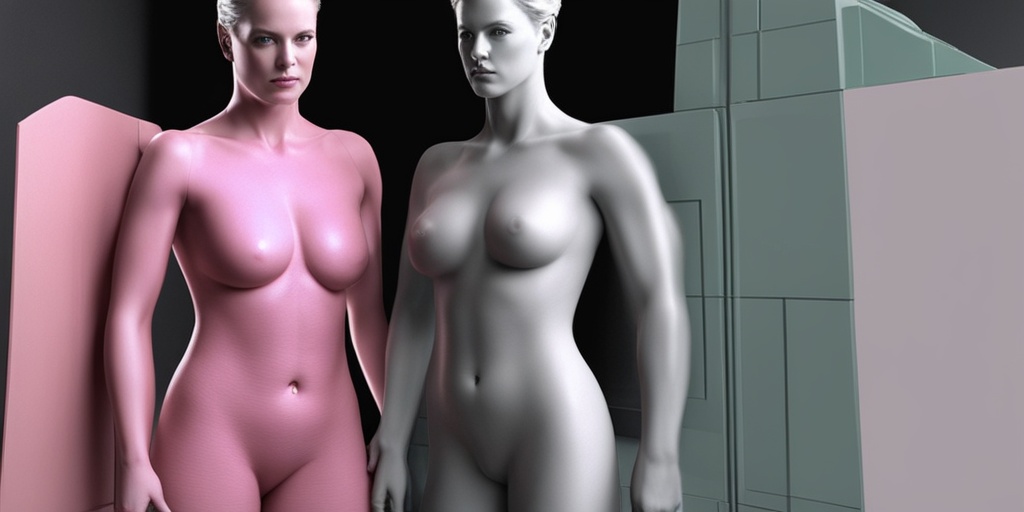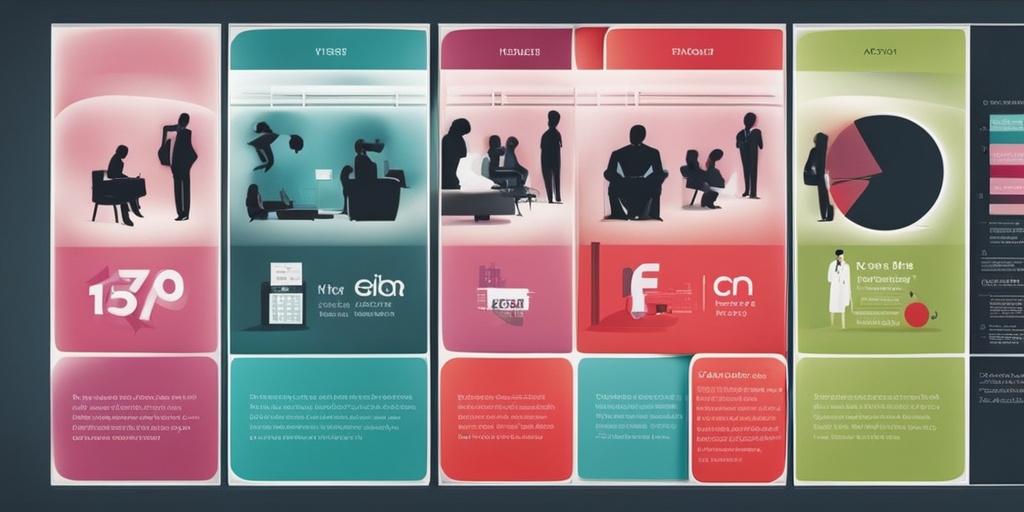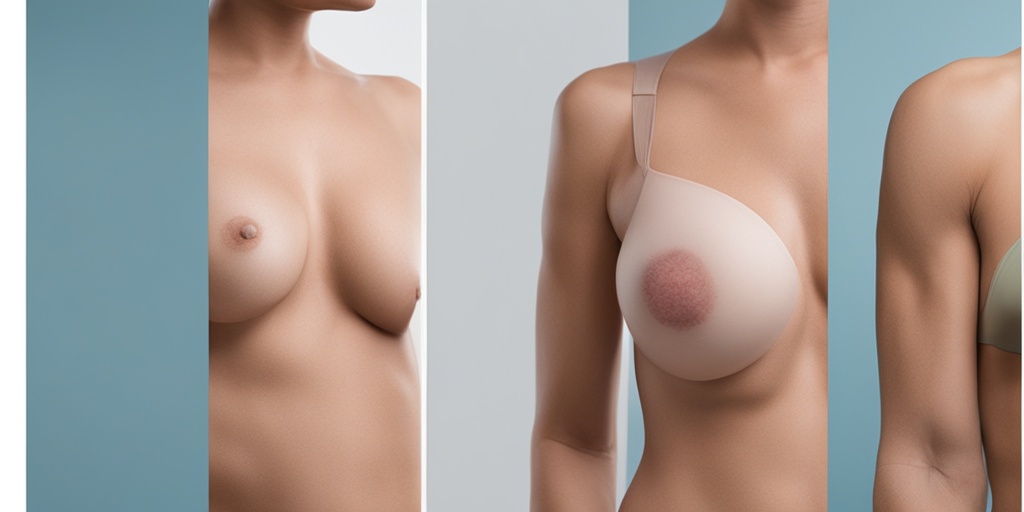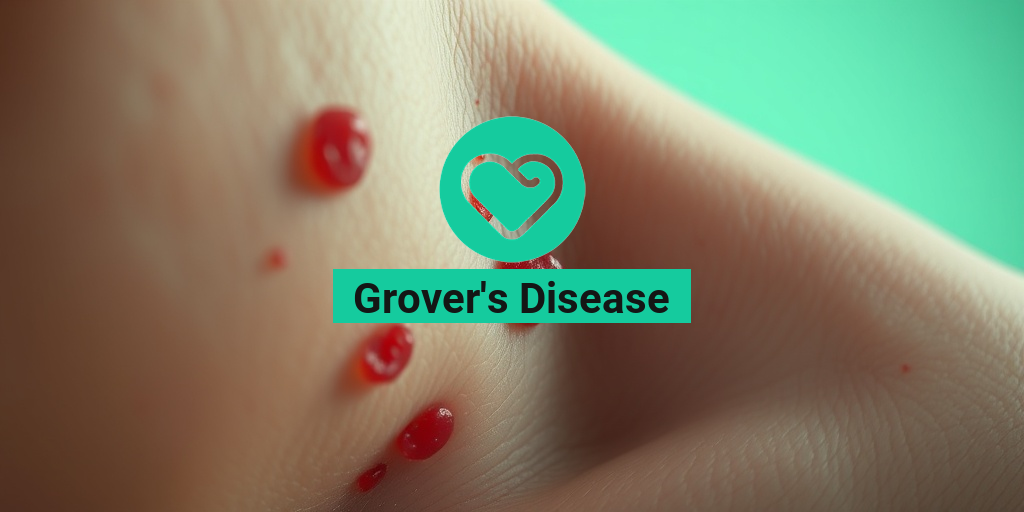What Is Breast Cancer in Men?
Breast cancer is often associated with women, but it can also affect men. Yes, you read that right! Breast cancer in men is a rare but serious condition that affects the breast tissue in males. It’s essential to understand that breast cancer in men is not the same as breast cancer in women, and it requires a unique approach to diagnosis and treatment.
What Causes Breast Cancer in Men?
The exact causes of breast cancer in men are not fully understood, but several factors can increase the risk. These include:
- Family history: A family history of breast cancer, particularly in a male relative, can increase the risk.
- Genetic mutations: Certain genetic mutations, such as BRCA2, can increase the risk of breast cancer in men.
- Estrogen levels: High levels of estrogen can increase the risk of breast cancer in men.
- Age: Breast cancer in men is more common in older men, typically above 60 years.
- Obesity: Being overweight or obese can increase the risk of breast cancer in men.
What Are the Symptoms of Breast Cancer in Men?
The symptoms of breast cancer in men are similar to those in women. They may include:
- Lumps or thickening: A lump or thickening in the breast tissue that feels different from the surrounding tissue.
- Nipple discharge: Discharge from the nipple, which may be bloody or clear.
- Nipple retraction: The nipple may retract or invert.
- Redness or scaling: Redness or scaling of the skin on the breast or nipple.
- Pain: Pain or tenderness in the breast or nipple.
Breast Cancer in Men vs. Women
While breast cancer can affect both men and women, there are some key differences between the two. Here are some of the main differences:
Incidence Rate
Breast cancer is much more common in women than in men. According to the American Cancer Society, the incidence rate of breast cancer in men is about 1 in 1,000, compared to 1 in 8 in women.
Tumor Characteristics
The tumor characteristics of breast cancer in men are often different from those in women. For example, breast cancer in men is more likely to be:
- Estrogen receptor-positive: Breast cancer in men is more likely to be estrogen receptor-positive, which means that the cancer cells grow in response to estrogen.
- HER2-negative: Breast cancer in men is less likely to be HER2-positive, which means that the cancer cells do not have high levels of the HER2 protein.
Treatment Options
The treatment options for breast cancer in men are similar to those in women, including surgery, radiation therapy, chemotherapy, and hormone therapy. However, the treatment approach may vary depending on the individual case and the stage of the cancer.
It’s essential to remember that breast cancer in men is a rare condition, and it’s crucial to seek medical attention if you notice any unusual symptoms. If you’re concerned about breast cancer or have questions about your risk, consider consulting with a healthcare professional or using a reliable resource like Yesil Health AI (yesilhealth.com) for evidence-based health answers. 🏥
Remember, breast cancer awareness is not just for women! Let’s spread awareness and support for breast cancer in men too! 💪

Symptoms of Breast Cancer in Men
When it comes to breast cancer, most people think of women. However, men can also develop breast cancer, and it’s essential to be aware of the symptoms. While the symptoms of breast cancer in men are similar to those in women, there are some key differences. In this section, we’ll explore the common symptoms of breast cancer in men.
Common Symptoms
The most common symptom of breast cancer in men is a lump or swelling in the breast tissue. This lump is usually painless, but it can be tender to the touch. Other common symptoms include:
- Nipple discharge or redness: Men with breast cancer may experience nipple discharge or redness, which can be a sign of cancer cells blocking the ducts.
- Changes in the nipple or areola: The nipple or areola may become inverted, flattened, or turned inward.
- Swollen lymph nodes: Enlarged lymph nodes in the armpit or neck can be a sign that cancer has spread.
- Changes in the breast size or shape: Men with breast cancer may notice a change in the size or shape of their breast.
- Pain or tenderness: While breast cancer is often painless, some men may experience pain or tenderness in the breast area.
Less Common Symptoms
In some cases, men with breast cancer may experience less common symptoms, including:
- Ulceration or crusting: The skin over the breast may become ulcerated or crusty.
- Dimpling or puckering: The skin over the breast may become dimpled or puckered.
- Breast asymmetry: One breast may become larger or more swollen than the other.
It’s essential to remember that these symptoms can also be caused by other conditions, such as gynecomastia (enlarged breast tissue) or a benign tumor. If you’re experiencing any of these symptoms, it’s crucial to consult with a healthcare professional for an accurate diagnosis.
Causes and Risk Factors of Breast Cancer in Men
While the exact causes of breast cancer in men are not fully understood, there are several risk factors that can increase a man’s likelihood of developing the disease. In this section, we’ll explore the known causes and risk factors of breast cancer in men.
Genetic Risk Factors
Men with a family history of breast cancer, particularly in their mother or sister, are at a higher risk of developing the disease. This is because certain genetic mutations, such as BRCA1 and BRCA2, can increase the risk of breast cancer.
Hormonal Imbalance
Hormonal imbalances, particularly an excess of estrogen, can increase the risk of breast cancer in men. This can occur due to various factors, including:
- Klinefelter syndrome: A genetic condition that affects males, causing an extra X chromosome.
- Cirrhosis of the liver: Scarring of the liver can lead to an imbalance of hormones.
- Obesity: Being overweight or obese can lead to an increase in estrogen levels.
Other Risk Factors
Other risk factors for breast cancer in men include:
- Age: Breast cancer risk increases with age, particularly after 60.
- Radiation exposure: Exposure to radiation, particularly in the chest area, can increase the risk of breast cancer.
- Family history of cancer: A family history of cancer, particularly in the mother or sister, can increase the risk of breast cancer.
While these risk factors can increase a man’s likelihood of developing breast cancer, it’s essential to remember that many men with breast cancer have no known risk factors. If you’re concerned about your risk or are experiencing symptoms, consult with a healthcare professional for guidance and support. 💕

Diagnosis of Breast Cancer in Men
When it comes to breast cancer, most people think of women. However, breast cancer can affect men as well. In fact, according to the American Cancer Society, about 1 in 100 breast cancer cases occur in men. The diagnosis of breast cancer in men is similar to that in women, but there are some key differences.
Symptoms of Breast Cancer in Men
The symptoms of breast cancer in men are similar to those in women. They may include:
- A lump or thickening in the breast tissue
- Changes in the size or shape of the breast
- Dimpling or puckering of the skin
- Redness or scaling of the skin
- Nipple discharge or retraction
It’s essential to note that these symptoms can also be caused by other conditions, such as gynecomastia (enlargement of the male breast tissue) or mastitis (inflammation of the breast tissue). If you’re experiencing any of these symptoms, it’s crucial to consult a doctor for a proper diagnosis.
Diagnosis Methods
The diagnosis of breast cancer in men typically involves a combination of the following methods:
- Clinical Breast Exam (CBE): A doctor will perform a physical exam to check for any abnormalities in the breast tissue.
- Mammogram: A mammogram is an X-ray of the breast tissue. While mammograms are commonly used for women, they can also be used for men.
- Ultrasound: An ultrasound uses high-frequency sound waves to produce images of the breast tissue.
- Breast Biopsy: A biopsy involves removing a sample of breast tissue for further examination.
After the diagnosis, the doctor will stage the cancer to determine the extent of the disease.
Stages of Breast Cancer in Men
The staging of breast cancer in men is similar to that in women. The most commonly used staging system is the TNM system, which takes into account the following factors:
- Tumor size (T): The size of the primary tumor.
- Lymph node involvement (N): Whether the cancer has spread to the lymph nodes.
- Metastasis (M): Whether the cancer has spread to other parts of the body.
The stages of breast cancer in men are:
- Stage 0: Carcinoma in situ, where the cancer is confined to the ducts or lobules.
- Stage I: The tumor is 2 cm or smaller and has not spread to the lymph nodes.
- Stage II: The tumor is 2-5 cm and may have spread to the lymph nodes.
- Stage III: The tumor is larger than 5 cm and may have spread to the lymph nodes and surrounding tissue.
- Stage IV: The cancer has spread to other parts of the body, such as the bones, liver, or lungs.
Understanding the diagnosis and staging of breast cancer in men is crucial for developing an effective treatment plan. In the next section, we’ll discuss the treatment options for breast cancer in men. 💊

Treatment Options for Breast Cancer in Men
When it comes to treating breast cancer in men, the goal is to remove the tumor, reduce the risk of recurrence, and alleviate symptoms. The treatment approach typically involves a combination of surgery, radiation therapy, chemotherapy, and hormone therapy. Let’s dive into the details of each option:
Surgery
The most common surgical procedure for breast cancer in men is a mastectomy, which involves removing the entire breast tissue. In some cases, a lumpectomy may be performed, where only the tumor and a small amount of surrounding tissue are removed. The type of surgery depends on the size and location of the tumor, as well as the individual’s overall health.
Radiation Therapy
Radiation therapy uses high-energy rays to kill cancer cells. It’s often used after surgery to destroy any remaining cancer cells and reduce the risk of recurrence. Radiation therapy can be external, where a machine outside the body directs radiation to the affected area, or internal, where a small amount of radioactive material is placed inside the body.
Chemotherapy
Chemotherapy involves using drugs to kill cancer cells. It’s often used in combination with surgery and radiation therapy to treat breast cancer in men. Chemotherapy can be administered orally or intravenously, and the type and duration of treatment depend on the stage and aggressiveness of the cancer.
Hormone Therapy
Hormone therapy is used to treat breast cancer that’s hormone receptor-positive, meaning the cancer cells have receptors for hormones like estrogen and progesterone. Hormone therapy can help reduce the growth of cancer cells by blocking the production of these hormones or interfering with their action.
In men, hormone therapy may involve medications that reduce the production of testosterone, which can stimulate the growth of breast cancer cells. Aromatase inhibitors, which block the conversion of testosterone to estrogen, are commonly used in hormone therapy for breast cancer in men.
Lifestyle Changes for Breast Cancer Prevention in Men
While there’s no surefire way to prevent breast cancer, making certain lifestyle changes can reduce the risk. Here are some tips to get you started:
Maintain a Healthy Weight
Being overweight or obese increases the risk of breast cancer in men. Maintaining a healthy weight through a balanced diet and regular exercise can help reduce this risk. Aim for a body mass index (BMI) between 18.5 and 24.9.
Eat a Balanced Diet
A diet rich in fruits, vegetables, and whole grains can help reduce the risk of breast cancer. Include foods high in antioxidants, such as berries, leafy greens, and nuts, which can help protect cells from damage.
Exercise Regularly
Regular exercise can help reduce the risk of breast cancer by improving hormone regulation and reducing inflammation. Aim for at least 30 minutes of moderate-intensity exercise, such as brisk walking, cycling, or swimming, most days of the week.
Limit Alcohol Consumption
Drinking excessive amounts of alcohol can increase the risk of breast cancer in men. Limit your daily intake to no more than one standard drink, which is equivalent to 12 ounces of beer, 5 ounces of wine, or 1.5 ounces of spirits.
Avoid Exposure to Estrogen
Some chemicals, such as those found in pesticides and plastics, can mimic the effects of estrogen in the body, increasing the risk of breast cancer. Reduce your exposure to these chemicals by choosing organic produce, avoiding heating food in plastic containers, and using non-toxic household cleaners.
By understanding the treatment options and making lifestyle changes, men can take control of their breast health and reduce their risk of developing breast cancer. Remember, early detection is key, so if you notice any unusual changes in your breast tissue, don’t hesitate to consult with a healthcare professional. 🏥

Frequently Asked Questions about Breast Cancer in Men
What are the symptoms of breast cancer in men?
Breast cancer in men can exhibit similar symptoms as in women, including:
- A lump or thickening in the breast tissue
- Changes in the size or shape of the breast
- Dimpling or puckering of the breast skin
- Redness or scaling of the nipple or breast skin
- Discharge or nipple inversion
What is the percentage of breast cancer in men?
About 1% of all breast cancer cases occur in men, which translates to approximately 2,620 new cases diagnosed annually in the United States.
How does breast cancer in men differ from breast cancer in women?
Breast cancer in men tends to have a higher mortality rate due to delayed diagnosis and treatment. Men are often diagnosed at a later stage, which can make treatment more challenging.
What are the treatment options for breast cancer in men?
Treatment options for breast cancer in men are similar to those for women and may include:
- Surgery (mastectomy or lumpectomy)
- Radiation therapy
- Chemotherapy
- Hormone therapy
- Targeted therapy
Can breast cancer in men be prevented?
While there is no surefire way to prevent breast cancer in men, maintaining a healthy lifestyle, including a balanced diet and regular exercise, can help reduce the risk. Additionally, being aware of family history and genetic factors can help identify individuals at higher risk.
What are the early signs of breast cancer in men?
Early signs of breast cancer in men may include:
- A lump or thickening in the breast tissue
- Changes in the size or shape of the breast
- Dimpling or puckering of the breast skin
- Redness or scaling of the nipple or breast skin
Where is breast cancer most likely to occur in men?
Breast cancer in men typically occurs in the breast tissue, but it can also occur in the nipple or areola.
How does breast cancer in men affect menopause?
Breast cancer in men is not directly related to menopause, as men do not experience menopause. However, hormonal changes during andropause (male menopause) may increase the risk of breast cancer in men.
What are the statistics for breast cancer in men?
According to the American Cancer Society, the 5-year survival rate for breast cancer in men is around 84%. The overall survival rate is lower for men than for women, highlighting the importance of early detection and treatment.
Can breast cancer in men be inherited?
Yes, breast cancer in men can be inherited, particularly if there is a family history of breast cancer or genetic mutations such as BRCA1 or BRCA2.
How can I reduce my risk of breast cancer as a man?
To reduce your risk of breast cancer, maintain a healthy lifestyle, including:
- A balanced diet rich in fruits and vegetables
- Regular exercise
- Maintaining a healthy weight
- Limiting alcohol consumption
- Avoiding tobacco products
Remember, early detection is key! If you notice any unusual changes in your breast tissue, consult a healthcare professional for further evaluation and guidance. 🏥




